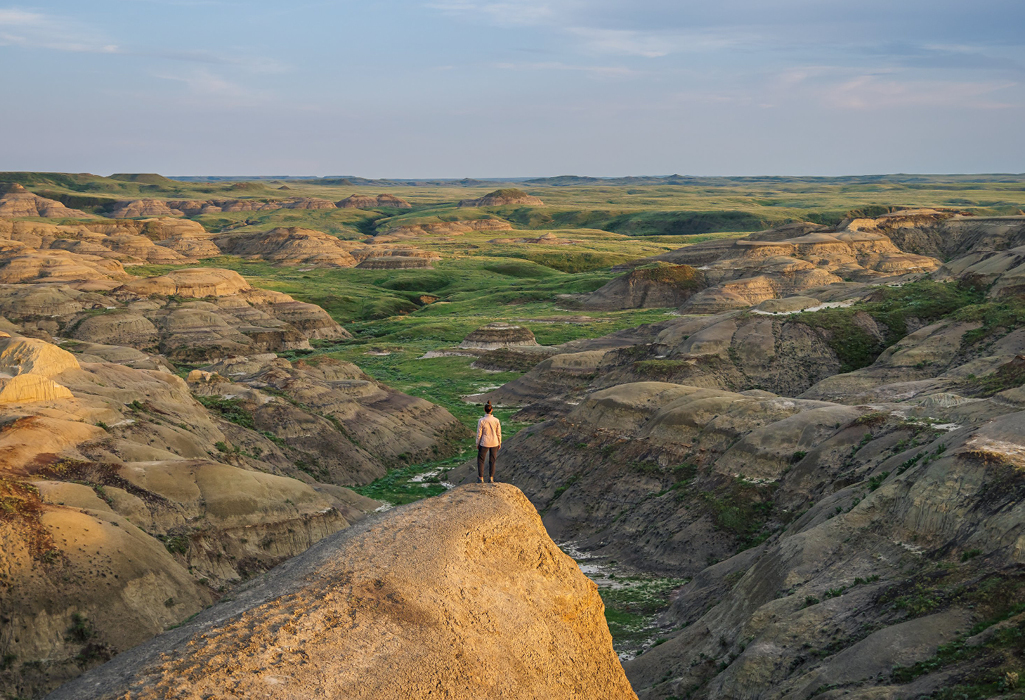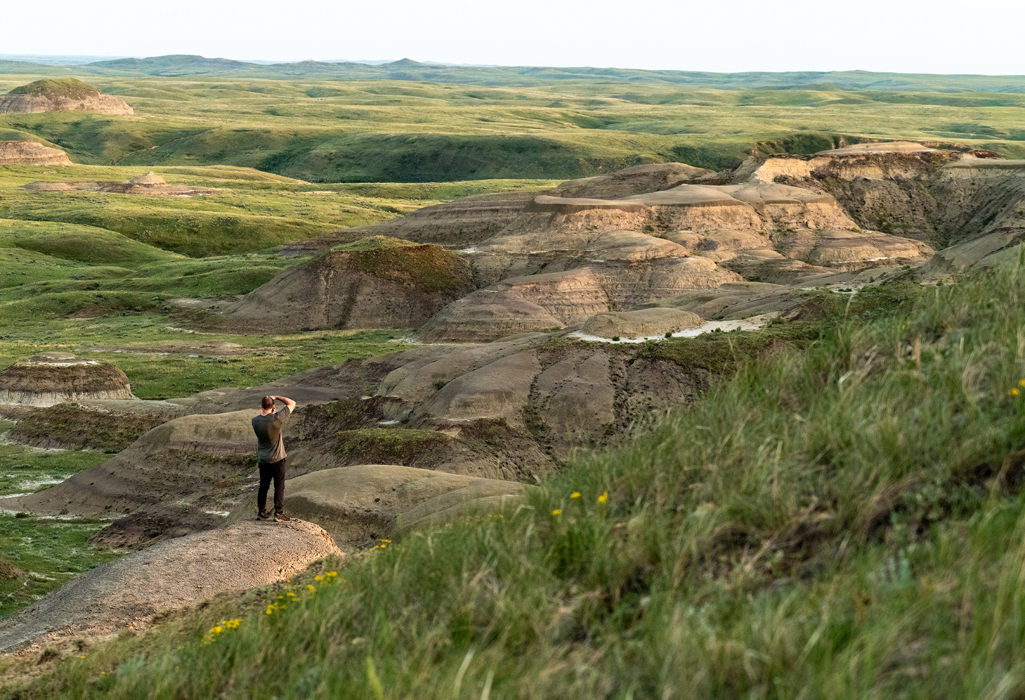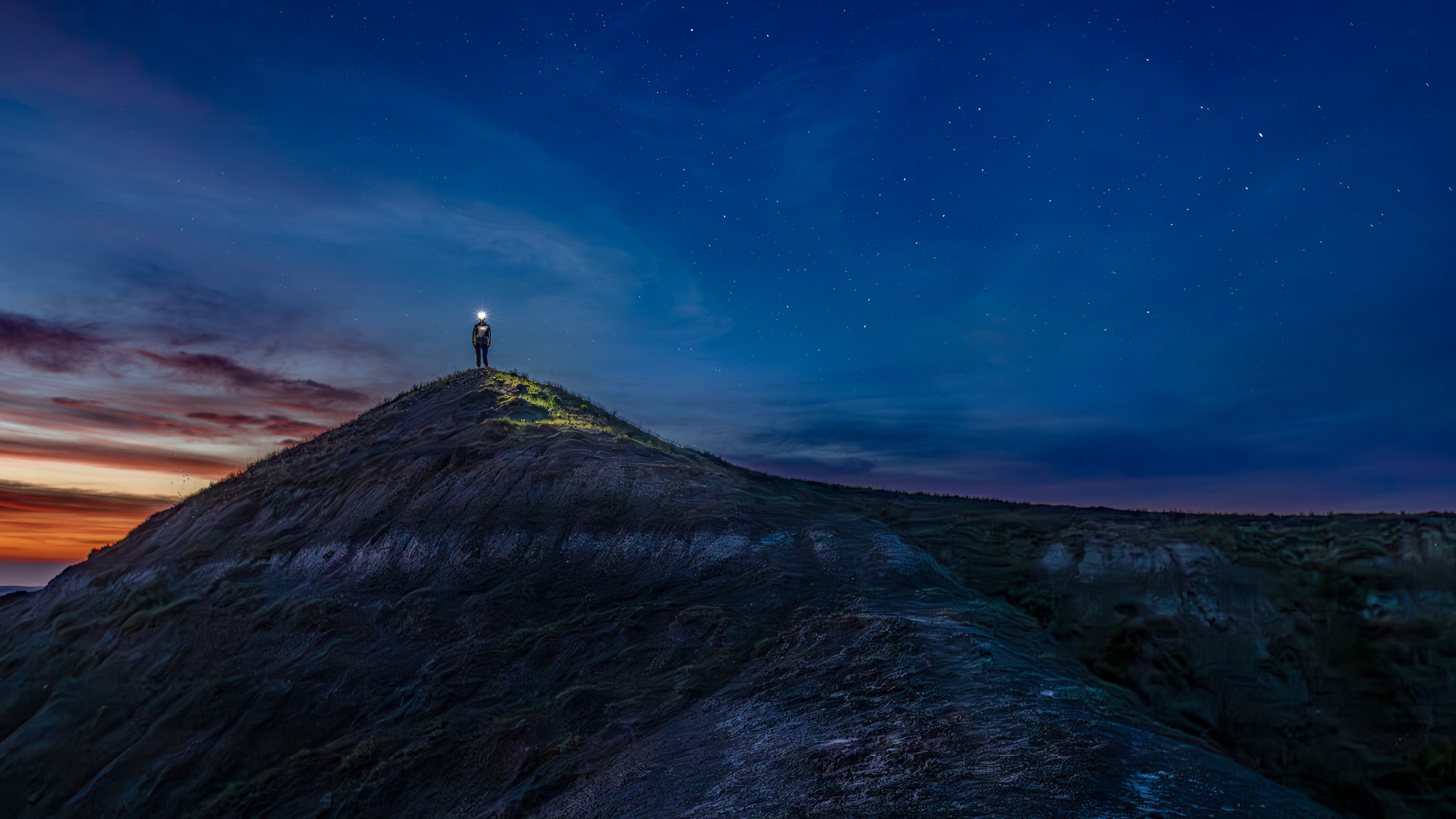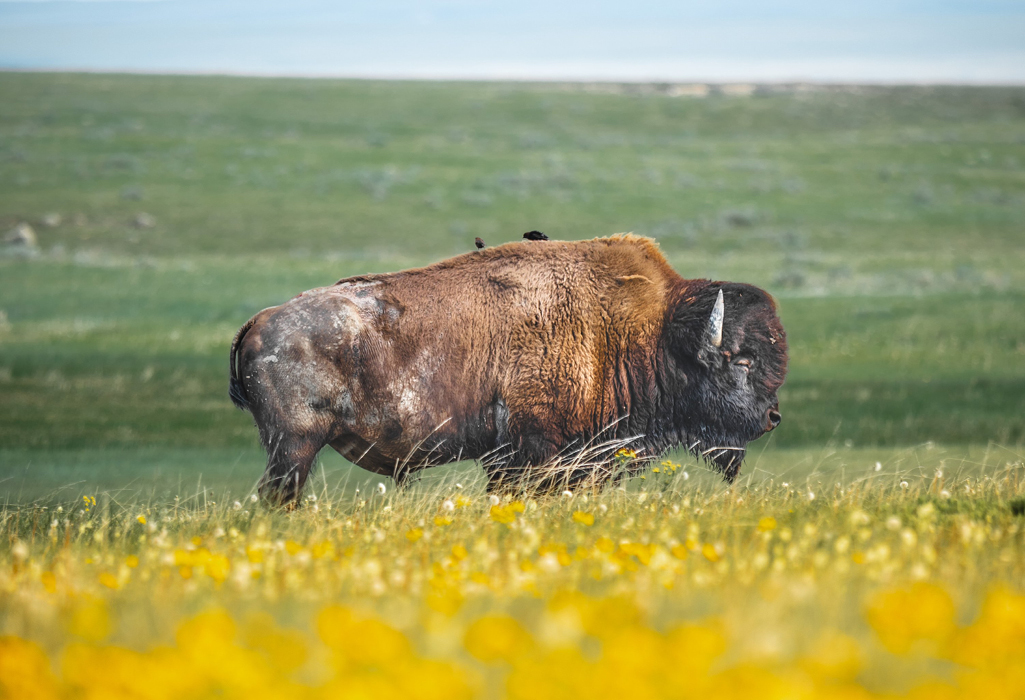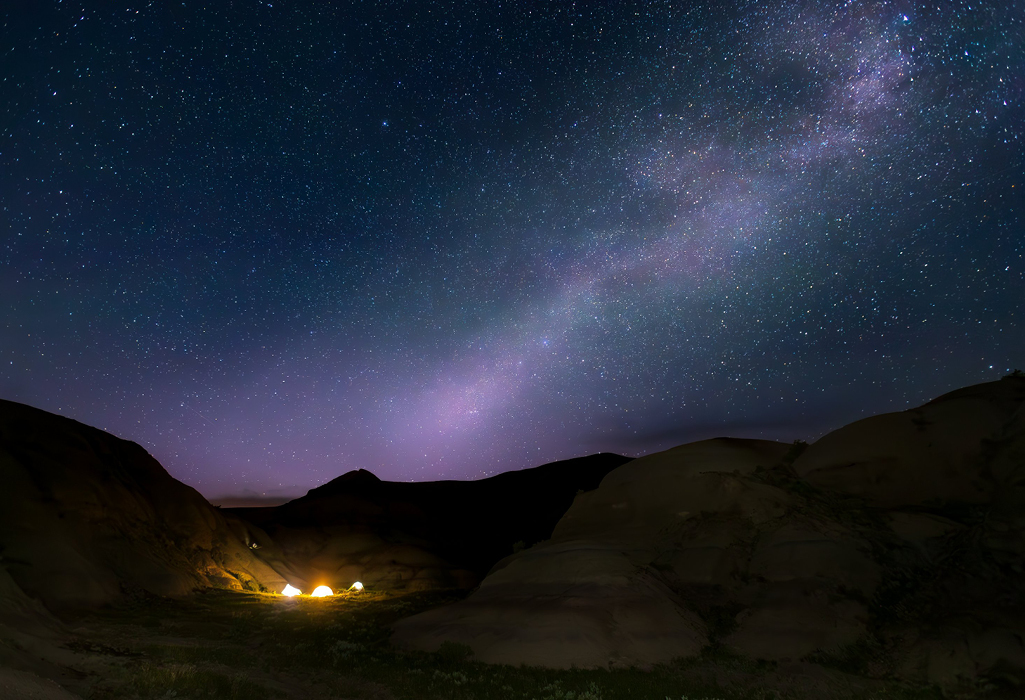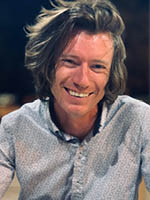Photographing the Darkest Skies in Canada at Grasslands National Park
We’re standing on the edge of a butte overlooking the Valley of 1,000 Devils in the East Block of Grasslands National Park. It’s midnight. Below us, the dark, vague and motionless outlines of the valley floor, but above us, a cosmic chandelier of light dangles overhead. It’s the galactic centre of the Milky Way galaxy, clear and crisp with detail even to the naked eye. I've hiked into the backcountry on the Valley of 1,000 Devils Trail with astrophotographer Ben Hutton, on assignment for Tourism Saskatchewan.
photo by Benjamin Hutton
Astrophotographers measure light pollution on something called the Bortle Scale – the greater the light pollution in an area, the harder it is to see objects in the night sky. For many parts of the Eastern United States and most of Western Europe, light pollution levels, even in the countryside, never dip below 3-4 on the scale. In the heart of big cities, it’s generally 8-9. In Grasslands National Park, it’s a 1, the lowest level on the scale.
Hutton and I are here to document what it means to be Canada’s darkest Dark Sky Preserve.
Grasslands is one of Saskatchewan’s two national parks, a 730-sq. km expanse of native prairie grassland and a snapshot of Saskatchewan before the plow. It’s an incredible tract of land, spread between two blocks, the West and the East. Both offer camping, scenic drives, hiking trails and virtually no human-made light pollution.
We’ve hiked the first 6 km of the 12-km Valley of 1,000 Devils Trail in the East Block. The loop track begins and ends at the Rock Creek Campground and makes for a good day hike, but the park also allows backcountry camping amongst the hoodoos and badlands of the valley. It’s true off-grid camping and requires some planning and preparation, with no access to water or washroom facilities and summertime temperatures reaching +40 C. A backcountry permit is required, as well as checking in and out at the Rock Creek Campground office.
The extra effort is worth it though as hikers often have the backcountry entirely to themselves. We certainly do tonight, and from our vantage point, we can’t see a single light in the surrounding countryside. Hutton has handpicked this location, at the head of a branch of the valley, to frame the Milky Way above the valley floor. Meanwhile, I have been sitting in quiet awe, the park offering unparalleled solitude under a blanket of stars.
photo by Benjamin Hutton
For those looking for a more accessible adventure, the park has several shorter hikes in both blocks, as well as scenic drives with viewpoints.
The Ecotour Scenic Drive is a 20-km stretch of gravel road that cuts through the heart of the West Block. It’s a prairie safari for wildlife photographers with regular sightings of the free-roaming bison herd, deer, pronghorn, coyote and even rattlesnakes. Visitors at dawn or dusk might also spot burrowing owls, who often live among the black-tailed prairie dog colonies.
The East Block offers distinctly wild vistas set apart by an eroded landscape with exposed history. Drive or cycle the paved 11-km Badlands Parkway and enjoy one of the six scenic viewpoints. While on trails, keep a sharp eye out as rainwater and erosion are constantly unveiling new dinosaur fossils within the park and it is home to several active dinosaur digs. During Fossil Fever (August 13-17, 2024), visitors can join paleontologists from the Royal Saskatchewan Museum in the field as they work to preserve and catalog these fossils.
photo by Benjamin Hutton
For non-backcountry stargazing, Parks Canada recommends the Belza Day Use Site, Two Trees Trail, Frenchman Valley Campground, Rock Creek Campground or the parking areas along the Badlands Parkway for car-accessible stargazing and astrophotography. It is advised to limit your travel at night because the terrain can be difficult. Watch for deer and other animals crossing the roads.
Author/Photographer/Videographer: Matt Duguid
Matt Duguid is a Content Creator for Tourism Saskatchewan. He experiences Saskatchewan every way he can – whether it’s on-road, off-road or via bike path, hiking trail or on a stand-up paddleboard. Favourite campsite: Deer Hollow #17 in Cypress Hills Interprovincial Park. Want to know more about a place he’s been? Ask him at @duguidoutdoors.
